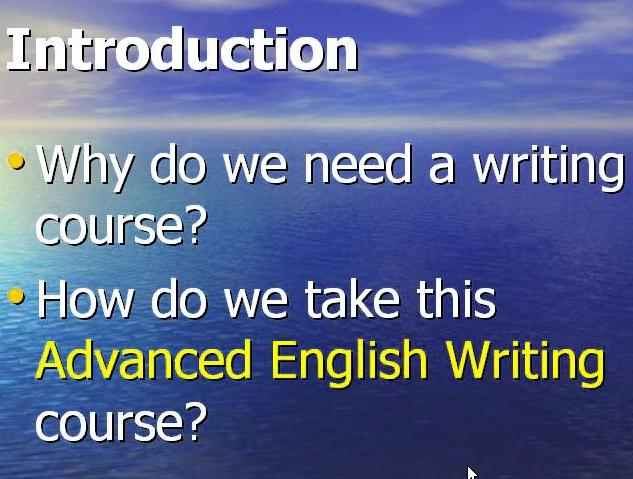神秘内容 Loading...
 (来源:http://www.EnglishCN.com) (来源:http://www.EnglishCN.com)
The Elements of Style
William Strunk, Jr. (Professor of English, Cornell University)
Asserting that one must first know the rules to break them, this classic reference book is a must-have for any student and conscientious writer. Intended for use in which the practice of composition is combined with the study of literature, it gives in brief space the principal requirements of plain English style and concentrates attention on the rules of usage and principles of composition most commonly violated.
I. INTRODUCTORY
This book is intended for use in English courses in which the practice of composition is combined with the study of literature. It aims to give in brief space the principal requirements of plain English style. It aims to lighten the task of instructor and student by concentrating attention (in Chapters II and III) on a few essentials, the rules of usage and principles of composition most commonly violated. The numbers of the sections may be used as references in correcting manuscript.
The book covers only a small portion of the field of English style, but the experience of its writer has been that once past the essentials, students profit most by individual instruction based on the problems of their own work, and that each instructor has his own body of theory, which he prefers to that offered by any textbook.
The writer's colleagues in the Department of English in Cornell University have greatly helped him in the preparation of his manuscript. Mr. George McLane Wood has kindly consented to the inclusion under Rule 11 of some material from his Suggestions to Authors.
The following books are recommended for reference or further study: in connection with Chapters II and IV, F. Howard Collins, Author and Printer (Henry Frowde); Chicago University Press, Manual of Style; T. L. De Vinne Correct Composition (The Century Company); Horace Hart, Rules for Compositors and Printers (Oxford University Press); George McLane Wood, Extracts from the Style-Book of the Government Printing Office (United States Geological Survey); in connection with Chapters III and V, Sir Arthur Quiller-Couch, The Art of Writing (Putnams), especially the chapter, Interlude on Jargon; George McLane Wood, Suggestions to Authors (United States Geological Survey); John Leslie Hall, English Usage (Scott, Foresman and Co.); James P. Kelly, Workmanship in Words (Little, Brown and Co.).
It is an old observation that the best writers sometimes disregard the rules of rhetoric. When they do so, however, the reader will usually find in the sentence some compensating merit, attained at the cost of the violation. Unless he is certain of doing as well, he will probably do best to follow the rules. After he has learned, by their guidance, to write plain English adequate for everyday uses, let him look, for the secrets of style, to the study of the masters of literature.
William Strunk, Jr. (1869–1946). The Elements of Style. 1918.
II. ELEMENTARY RULES OF USAGE
1. Form the possessive singular of nouns with 's.
Follow this rule whatever the final consonant. Thus write,
Charles's friend
Burns's poems
the witch's malice
This is the usage of the United States Government Printing Office and of the Oxford University Press.
Exceptions are the possessives of ancient proper names in -es and -is, the possessive Jesus', and such forms as for conscience' sake, for righteousness' sake. But such forms as Achilles' heel, Moses' laws, Isis' temple are commonly replaced by
the heel of Achilles
the laws of Moses
the temple of Isis
The pronominal possessives hers, its, theirs, yours, and oneself have no apostrophe.
2. In a series of three or more terms with a single conjunction, use a comma after each term except the last.
Thus write,
red, white, and blue
honest, energetic, but headstrong
He opened the letter, read it, and made a note of its contents.
This is also the usage of the Government Printing Office and of the Oxford University Press.
In the names of business firms the last comma is omitted, as
Brown, Shipley and Company
The abbreviation etc., even if only a single term comes before it, is always preceded by a comma.
3. Enclose parenthetic expressions between commas.
The best way to see a country, unless you are pressed for time, is to travel on foot.
This rule is difficult to apply; it is frequently hard to decide whether a single word, such as however, or a brief phrase, is or is not parenthetic. If the interruption to the flow of the sentence is but slight, the writer may safely omit the commas. But whether the interruption be slight or considerable, he must never omit one comma and leave the other. Such punctuation as
Marjorie's husband, Colonel Nelson paid us a visit yesterday,
or
My brother you will be pleased to hear, is now in perfect health, |

